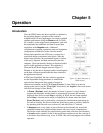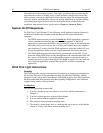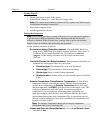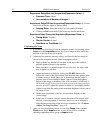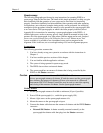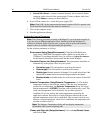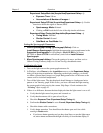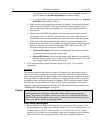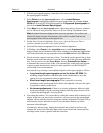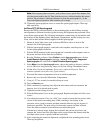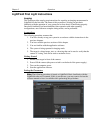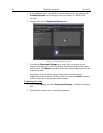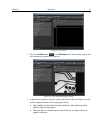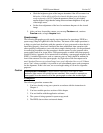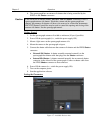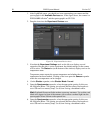
Chapter 5 Operation 43
43
2. With the spectrograph properly connected to the camera, turn the power on, wait for
the spectrograph to initialize.
3. Select Define from the Spectrograph menu, click on Install/Remove
Spectrograph, highlight the appropriate spectrograph name (for example, Acton
SP300i for an Acton SP-2300i spectrograph) in the Supported Spectrographs list,
and click on Install Selected Spectrograph.
4. Select Move from the Spectrograph menu, choose the grating to be move, and then
set it to 500 nm if using a mercury lamp or to 0.0 nm if using a broadband source.
Hint: Overhead fluorescent lights produce a mercury spectrum. Use a white card
tilted at 45 degrees in front of the entrance slit to reflect overhead light into the
spectrograph. Select 500 nm as the spectral line.
5. Set the slit to 10 µm at a minimum. If necessary, adjust the Exposure Time to
maintain optimum (near full-scale) signal intensity.
6. Wait until the detector temperature locks at its default temperature.
7. In WinSpec, select Focus (on the Acquisition menu or on the Experiment Setup
dialog) to begin data accumulation. Data will be continuously acquired and displayed but
will not be stored until you stop acquisition and use the Save function on the File menu.
8. Slowly move the camera in and out of focus. You should see the spectral line go from
broad to narrow and back to broad. Leave the camera set for the narrowest achievable
line. You may want to use the Focus Helper function (Process|Focus Helper…)
to determine the narrowest line width: it can automatically locate peaks and generate
a report on peak characteristics during live data acquisition (see the WinSpec/32
on-line help for more information).
Note that the way focusing is accomplished depends on the spectrograph, as follows:
Long focal-length spectrographs such as the Acton SP-2300: The
mounting adapter includes a tube that slides inside another tube to move the
camera in or out as required to achieve optimum focus.
Short focal-length spectrographs: There is generally a focusing
mechanism on the spectrograph itself which, when adjusted, will move the optics
as required to achieve proper focus.
No focusing adjustment: If there is no focusing adjustment, either provided
by the spectrograph or by the mounting hardware, then the only recourse will be
to adjust the spectrograph’s focusing mirror.
9. Next adjust the rotation. You can do this by rotating the camera while watching a live
display of the line (you may need to loosen two setscrews securing the spectrograph
adapter). Choose a peak to monitor during the rotational alignment. This peak will go
from broad to narrow and back to broad. Leave the camera rotation set for the
narrowest achievable peak.
Alternatively, take an image, display the horizontal and vertical cursor bars, and
compare the vertical bar to the line shape on the screen. Rotate the camera until the
line shape on the screen is parallel with the vertical bar.



